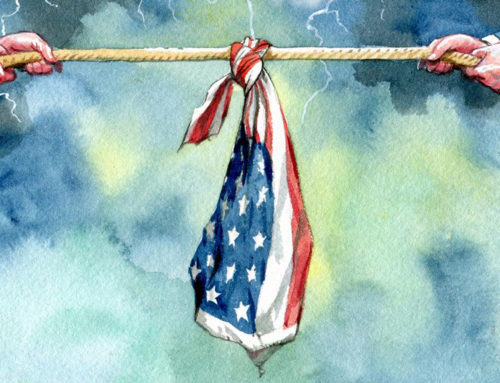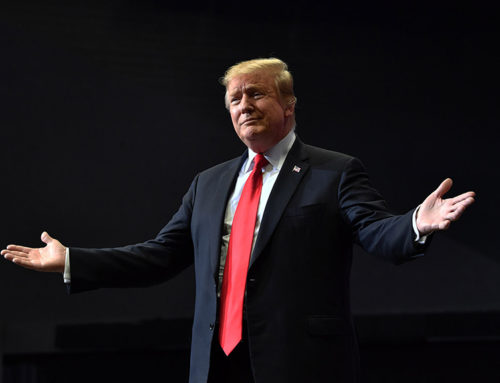In times of economic challenges, security issues, and public health crises, it’s common for people to look to the government for solutions. But when those solutions lead to more bureaucratic red tape and less individual freedom, the result can often be unintended consequences and inefficiency. While government has a role to play in maintaining stability and safety, history shows that “ more government ” is not always the answer to problems created or worsened by government in the first place.
The Case Against Expanding Government
1. The Limits of Bureaucracy: When More Rules Lead to Less Efficiency
Bureaucratic expansion is one of the most cited drawbacks of “big government.” With more government intervention comes more agencies, policies, and regulatory frameworks—all of which require significant resources and time to manage. While these structures are often created to address specific issues, they can have the unintended effect of slowing down decision-making and increasing inefficiency.
Example: The U.S. healthcare system is an area where bureaucracy often leads to inefficiencies. Despite the government’s role in managing programs like Medicare and Medicaid, the healthcare system remains one of the most complex and costly in the world. Efforts to expand government control over healthcare have often been met with mixed results, leading to complicated billing systems and higher costs that impact patients, healthcare providers, and taxpayers alike.
2. Accountability Challenges: More-Government, Less-Oversight
When government expands, accountability often decreases. Larger bureaucracies make it difficult for the public to track where funds are going and how effectively they are being used. Government agencies are funded by taxpayers, yet they don’t always face the same scrutiny or consequences that a private business would if it failed to meet its goals. In many cases, government departments continue to receive funding even when their results are poor or nonexistent.
Example: Public education in the U.S. illustrates this issue. Despite increases in funding over the years, the quality of education in many districts remains stagnant or has declined. Administrative costs have ballooned, and the education system has grown increasingly complex, with funds often failing to reach the classrooms where they’re needed most. Expanding government control over education has, in many cases, only widened the gap between spending and results.
3. Incentive Problems: Why Government Isn’t Built to Be Efficient
Unlike private businesses, government agencies don’t operate with the same profit and efficiency incentives. A government program that is wasteful or ineffective is rarely scaled back or shut down; instead, it is often restructured, reorganized, or expanded, which may lead to even greater inefficiencies. With no competition and a virtually guaranteed budget, government entities have little reason to innovate or improve.
Example: The U.S. Postal Service (USPS) is a prime example. As a government agency, USPS is mandated to provide universal service, which is admirable in theory but comes with high costs and limited flexibility. Despite facing competition from private companies that deliver faster and often more reliably, USPS continues to operate at a financial loss year after year. Instead of reducing its operational costs, it often requires government bailouts to keep running.
4. More Regulation, Less Freedom: The Cost of Expanding Government Control
Expanding government involvement often leads to an increase in regulations. While regulations can protect consumers and the environment, too much regulation can restrict individual freedoms and stifle economic growth. Small businesses, in particular, struggle under heavy regulatory burdens that larger companies can often absorb more easily.
Example: The Environmental Protection Agency (EPA) is frequently cited as an example where regulatory power has had unintended consequences. While environmental protections are crucial, overly restrictive regulations have sometimes created significant hurdles for farmers, small businesses, and industries, often without achieving the intended environmental improvements. These regulations can slow down innovation, limit job creation, and reduce the competitiveness of American businesses.

5. Debt and Deficit: The Economic Cost of Bigger Government
Increasing government programs and departments doesn’t come without a cost. Expanding government services means spending more taxpayer money, which often leads to increased debt and deficit spending. As government takes on more responsibilities, the cost of running these programs increases, potentially leading to higher taxes or cuts in other essential services.
Example: The national debt in the United States is now over $30 trillion, with deficit spending a recurring issue. A significant portion of this debt comes from government programs that have expanded over time. With each new government initiative, the strain on the federal budget increases, leading to economic consequences that future generations will have to address.
6. Innovation and Adaptability: How Big Government Slows Progress
Government agencies are often slow to adapt to changing circumstances, which is problematic in today’s fast-paced world. Innovation tends to flourish in environments with competition, flexibility, and fewer restrictions, all of which are limited within a heavily regulated, bureaucratic system. When government dominates an industry or heavily regulates it, there’s little room for new ideas or improved methods to emerge.
Example: Look at technology and communications. While government plays an essential role in regulation and oversight, too much interference can stifle growth. The rapid progress of the tech sector over the last few decades is largely due to private sector innovation. When the government attempts to exert more control, it risks slowing down advancements that benefit consumers and drive economic growth.
7. A Better Path Forward: Limited Government and Personal Responsibility
The solution to government inefficiencies isn’t necessarily more government, but rather a smarter, more efficient government that empowers individuals and communities. Limited government means focusing resources on core responsibilities like defense, infrastructure, and public safety, while leaving other areas to the private sector, local governments, and individual choice. By streamlining its role, the government can operate more effectively and allow citizens the freedom to innovate and find solutions that work for them.
A limited government approach also encourages self-reliance and personal responsibility, fostering a culture where individuals and businesses have the freedom to thrive without excessive intervention. In this way, government serves as a support system rather than a restrictive force, and communities are empowered to address local issues without overbearing oversight.
The Case for Smarter, Not Larger, Government
While government has a critical role in society, expanding it without addressing core accountability and efficiency issues only leads to more waste and frustration. Rather than adding layers of bureaucracy, we need a government that operates within its means, prioritizes efficiency, and respects the rights and freedoms of its citizens. More government isn’t the answer to government failure; smarter, streamlined government that empowers individuals and communities will create a stronger, more resilient nation.






